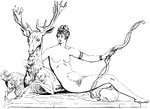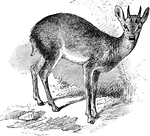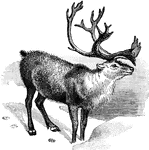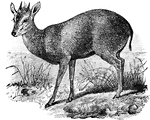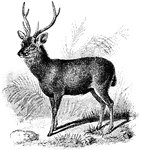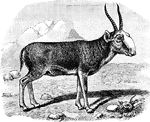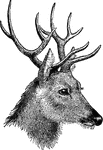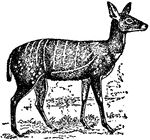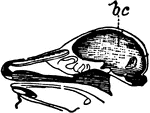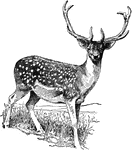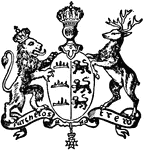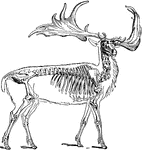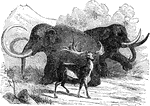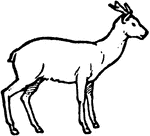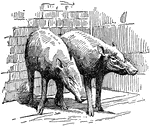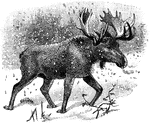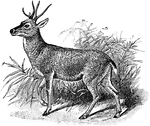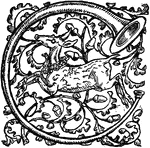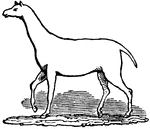
Anoplotherium Gracile
"The Anoplotherium gracile was of elegant proportions, resembling in size and form the gazelle,…
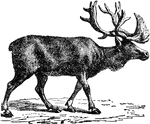
Reindeer
A species of mammals of the deer family, native to the northern regions of Eurasia. It has long been…
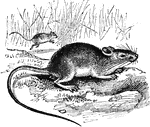
Deer Mouse
It is about 4 inches long with a long scaly tail and enlarged hind quarters and hind feet, allowing…

Deer Mouse
It is about 4 inches long with a long scaly tail and enlarged hind quarters and hind feet, allowing…

Stag Horns
"The annexed cut represents the horns of the stag at different ages. During the first year, there is…
Artiodactyles
"Bones of fore foot of existing Artiodactyle. Red Deer (Cervus elaphus)." —The Encyclopedia Britannica,…

Hydropotes Inermis
"Skull of Hydropotes inermis (adult male), a deer without antlers, but with largely-developed upper…
Horse Fly Larva
The larvae are elongated, somewhat flattened creatures, some living in the soil, some in water, and…

Horse Fly
The horse-flies or tabanidae, comprise another set of troublesome creatures, of medium or large…

Organic Life, Collage of
A collage of different types of organic life including deer in a forest, farmers harvesting wheat, and…

Meadow Beauty
Of the meadow-beauty family (Melastomaceae), the meadow beauty or deer-grass (Rhexia virginica).
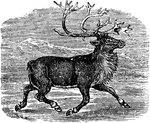
Reindeer
A species of deer found in the northern parts of Europe and Asia. It has branched, recurved, round antlers,…
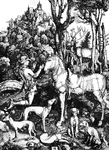
The Conversion of St. Eustace
"The Conversion of St. Eustace. By Albrecht Dürer. From the engraving on copper." -Heath, 1901

Deer Mouse
The genus Peromyscus contains species commonly referred to as deer mice. This is a genus of New World…

Anoa
Anoa are a subgenus of buffalo comprising two species native to Indonesia: the Mountain Anoa (Bubalus…

Brewery Diagram
A diagram of a brewery. A brewery is a dedicated building for the making of beer, though beer can be…

Tower Brewery Cellars
A diagram of a tower brewery cellars. A brewery is a dedicated building for the making of beer, though…
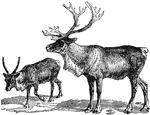
Reindeer
The reindeer (Rangifer tarandus), also known as the caribou when wild in North America, is an Arctic…
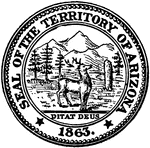
Seal of Arizona
The Seal of the Territory of Arizona, 1863. The image on the seal shows mountains, forests, and a deer.…
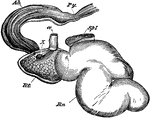
Stomach of a Deer
Stomach of a musk deer, left aspect- the last three compartments opened and reflected forwards. Rn,…
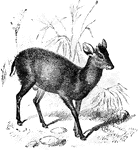
Tufted Deer
The Tufted Deer (Elaphodus cephalophus) is a mammal closely related to the muntjac in the Cervidae family…

Statant Guardant
Hart at Gaze. The deer standing at gaze (facing the viewer) shows the statant guardant attitude of a…
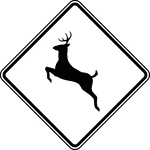
Deer Crossing, Black and White
Nonvehicular signs may be used to alert road users in advance of locations where unexpected entries…
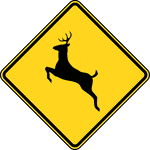
Deer Crossing, Color
Nonvehicular signs may be used to alert road users in advance of locations where unexpected entries…

Deer Crossing, Outline
Nonvehicular signs may be used to alert road users in advance of locations where unexpected entries…
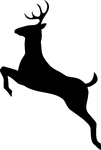
Deer Crossing, Silhouette
Nonvehicular signs may be used to alert road users in advance of locations where unexpected entries…
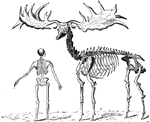
Extinct Giant Elk
The giant elk ranged from Ireland to the borders of Italy. The Irish Elk or Giant Deer was a species…

Stag at Gaze
"Argent, a stag at gaze proper. GAZE. An intent look. This is said of a deer standing still, and turning…

Stag Tripping
"Argent, a stag proper, tripping. TRIPPING. The motion of deer, between running and walking." -Hall,…
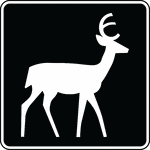
Deer Viewing Area, Black and White
This sign is used to indicates that it is likely that deer can be seen nearby.
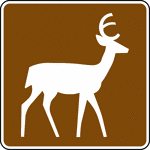
Deer Viewing Area, Color
This sign is used to indicates that it is likely that deer can be seen nearby.
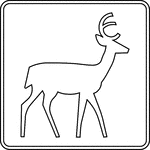
Deer Viewing Area, Outline
This sign is used to indicates that it is likely that deer can be seen nearby.

